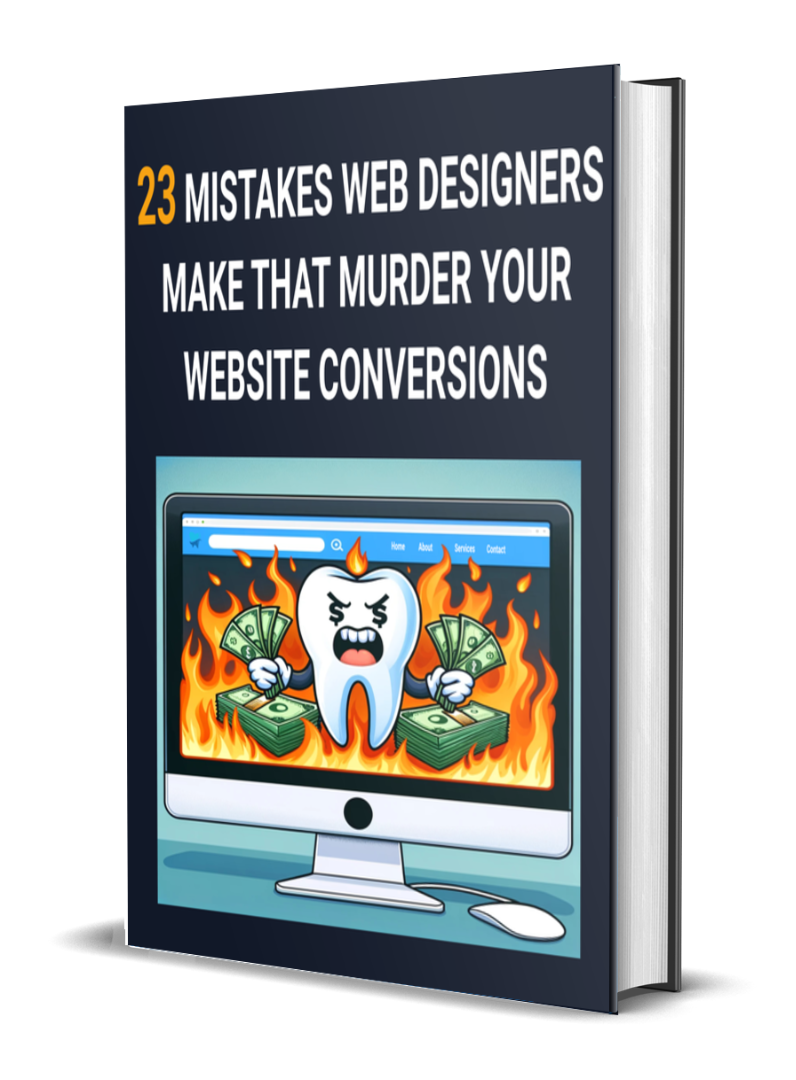March 30, 2024 | Bryan Brkic
Systematic Websites: The Most Powerful Online Growth Asset
The #1 reason why the first websites I ever built got terrible results is because they weren’t structured in a way that was effective for achieving their desired goals.
After many years of designing and developing websites, I’ve found that the most effective way to look at building a website is to view it as a collection of systems and processes refined to achieve specific goals. Then the overall website will take these systems and structure them in a way where they work together to drive someone from a website visitor into a customer.
Every website will have desired business goals. How effectively those goals are achieved will depend on the systems that are in place to help achieve these goals. The effectiveness of the outcome towards a goal will depend on the system that was put in place for achieving that goal.
If the wrong system is being used to achieve a goal, then the system will fail to achieve the desired outcome. Likewise, if the system isn’t refined enough, then it will also fail to achieve the desired outcome.
How do you put these systems together effectively then?
Let’s break it down
- First you need to understand what’s the goal you’re trying to achieve
- Then you want to look for systems that have already been proven to achieve that type of goal
- Then you want to take that system, and refine it further for your specific use case
Perhaps one of the goals for your website is to generate qualified leads. There are multiple proven systems for achieving this specific goal, and some of these systems are more effective than others.
Here’s a possible system that can be used
- You can drive traffic to an opt-in page (also often referred to as a squeeze page)
- Then on this page you can offer a lead magnet which is something of value to your target market that you give for free in exchange for an email address
- Then after they download the lead magnet, you can use their email and trigger an email automation sequence designed to nurture these leads into qualified leads (leads that are more likely to take the next steps)
- You will also subscribe these leads to your newsletter where you can then continue to nurture them until they’re ready to take the desired next step
- Then to make this system truly effective, you can use retargeting ads to bring people back to the opt-in page if they didn’t follow through with requesting the lead magnet in exchange for their email
This is an example of a proven system for generating qualified leads. But now the challenge becomes refining this system and all of its pieces to be effective for your specific case.
What should the lead magnet topic be? What should the title be? How should you structure the content? How should you structure the opt-in page? How should you structure the email automation sequence? How should you structure the emails within it? How should you structure your newsletter emails? How should you structure the retargeting ads?
There’s a ton of things to consider around this sort of system, and many possible areas of failure.
What if you didn’t pick the right lead magnet topic. What if it wasn’t something that your target audience desired enough to give their email in exchange for? Then you’ll have an overall system that doesn’t produce optimal results if any for that matter.
Another area where lots of people go wrong with this system is that they don’t test it properly.
You need to test one single piece of your system at a time and collect enough data in order to formulate an informed conclusion around the results.
Remember to never test more than one piece of your system at a time, otherwise you won’t be able to make any informed conclusions around the results. For example, if you test a different headline and image simultaneously, you’ll have no idea what the impact was of each of those changes.
After collecting data and formulating conclusions around the results, you can then take these informed conclusions to make good decisions around what to test next. Then you continue this process until you end up with an effective system for achieving your desired goal.
As you can see, building effective systems on a website isn’t easy. But when achieved, these systems will continue to automatically work for you 24/7.
Building an effective website system is very similar to building a house. Building a house involves a system with many components.
- First you might create an architectural plan
- Then you might prepare the site
- Set up the foundation
- Do the framing
- Install the roofing
- Install the plumbing
- Install the electrical
- Install the HVAC
- Install the insulation and ventilation
- Apply the housewrap and siding
- Do interior finishing
- And make the final inspections and corrections
All of the components of this system need to be done correctly and also in the correct order. Then if everything goes to plan, the final outcome will be a finished house.
But let’s say that there’s a flaw in one of these components. Maybe the housewrap wasn’t applied using the correct techniques.
Now suddenly the completed house will have many issues. You might end up having water seep into the walls, moisture accumulating, mold developing, and the house might end up having structural damage over time.
This is why it’s important for every step in a system to be refined and applied correctly. Otherwise you’ll end up with a final result that doesn’t meet your desired goal.
This applies for all systems on your website.
The thing is, website goals are not easy to achieve effectively and profitably. That is why you need powerful and proven systems in place that are designed to produce effective and profitable results for these specific goals.
We outlined one possible system that your website might contain. But you’ll likely want to have many more on your website because you’ll probably have more than one goal you’re trying to achieve through your website.
So you’ll want to have multiple systems in place for achieving different goals, as well as different systems for even achieving the same goals.
When it comes to the different goals you’d likely want to achieve with your website, these could include:
- Increasing SEO rankings for certain keywords
- Increasing the volume of product purchases
- Increasing the average order value of each customer
- Getting booked calls
- Getting booked appointments
- And so on
There are many possible goals, and on top of that a number of possible systems proven to achieve those goals.
For something like lead generation, you may use the system we previously outlined that had:
- The opt-in page
- The lead magnet
- The email automation sequence for nurturing leads
- And the retargeting ads
For lead generation, you might use variations of this system or even something completely different.
For example, a variation of this system might be using exit-intent popups that get someone to download a lead magnet.
Or you can use something completely different like:
- A quiz instead of a lead magnet for lead generation
- Discount coupons
- Webinar training
- Free workshop
- Free course
- Free software trial
- And the list goes on
Ultimately when you think about your website, you want to think about what your goals are with the website and think what kinds of systems you should have in place to help with effectively achieving those goals.
Your website will end up being a collection of many systems all working non-stop to achieve specific business goals. This is what I call a systematic website.
Then how this systematic website will ultimately work is that it will operate like a funnel where each of these goals fit into a different level of the funnel.
For example, your website might have an overall structure like the following:
- At the top you’ll have your systems for generating traffic
- Then this traffic will be filtered through your systems designed for generating leads
- Then these systems might further funnel into other systems designed to generate booked calls
- Then from there you’ll have systems that are offsite like sales calls, client relation management, fulfillment of a service, etc.
- And then after this phase, you might have systems which ask for reviews, testimonials, generate referrals, upsell other offers, etc.
A website without these different levels of refined systems feeding into one another simply won’t have what’s required to produce effective results.
This means that it’s not just about having refined systems for your different goals, but also planning how these systems will feed into one another in order to produce effective results and achieve your ultimate desired goals.
So when you build your website, you’ll want to follow this process:
- Understand the goals you aim to achieve with your website
- Find proven systems that were designed to meet those goals
- Refine these systems to achieve results for your specific use cases
- Split these goals up into different levels
- Then plan how these systems will work together and feed into one another in order to effectively achieve your desired goals
With this you’ll end up with a systematic website that works non-stop to achieve goals that ultimately result in online growth for your business.
That is everything for this one. Hope you enjoyed the letter and have a fantastic rest of your day.
- Bryan
P.S.
If you want to build websites that get great results, then there are many common web designer mistakes you’ll want to avoid.
If you want a detailed breakdown of what these mistakes are, I put together a resource that goes over 23 of the most common mistakes that web designers make that murder website conversion rates.
You can find this resource on the right column of this page, or you can click on the resources tab at the top of the page to get your hands on it.
It focuses on a dental website in particular, but most of the concepts apply to any other type of website.

